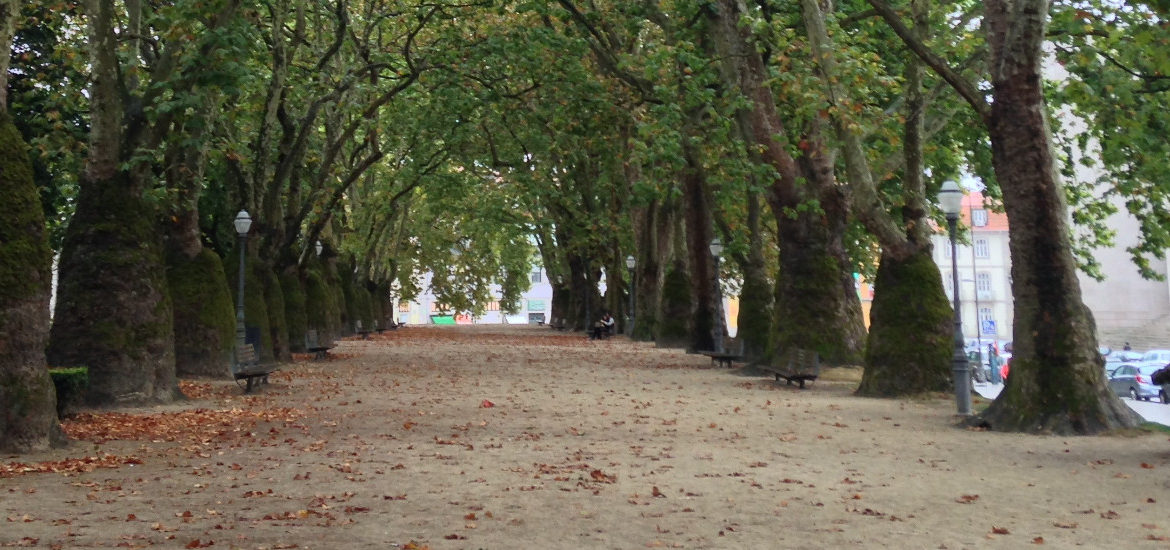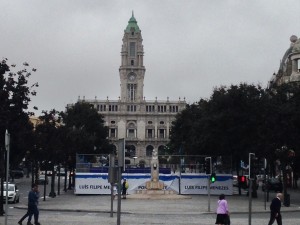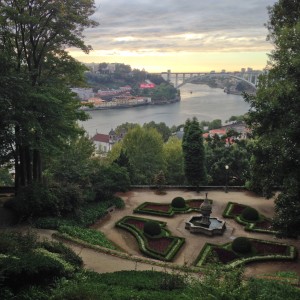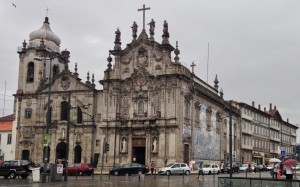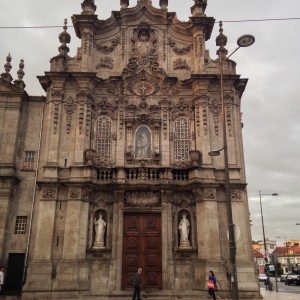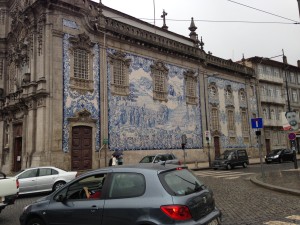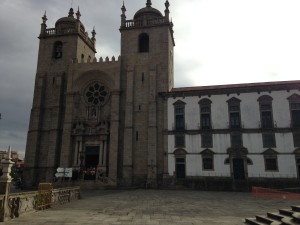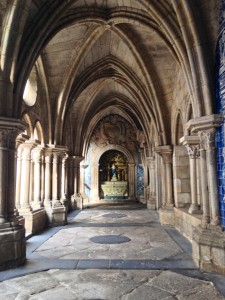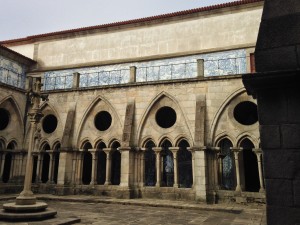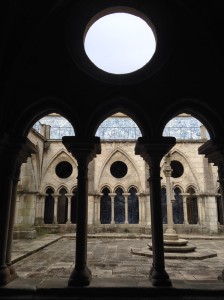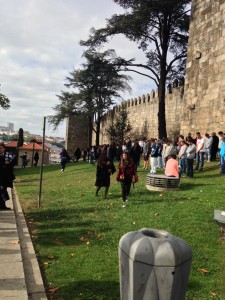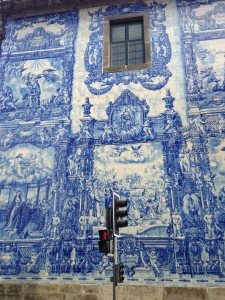I Lost My Heart in Porto
Wednesday 25 September 2013
We completed the Camino de Santiago pilgrimage and what a journey it was! But all things had to end and the next morning we finally left Santiago de Compostela. We took the train to Porto on the way to Lisbon where I must get the flight back to South Africa. We stayed in Porto for two days.
I was pleasantly surprised by Porto. It is an amazing city, Portugal’s second-largest city, a city of contrasts, with one foot in the past and another firmly standing on modern grounds. Walking through the streets of Porto was like discovering something interesting at every corner. The city was a living architectural museum, with an abundance of churches, Gothic buildings, ancient cathedrals, buildings decorated with blue tiles and modern shopping malls. Scaffolding and road works were everywhere, evidence of the long, slow process of rehabilitation.
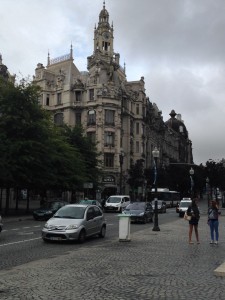
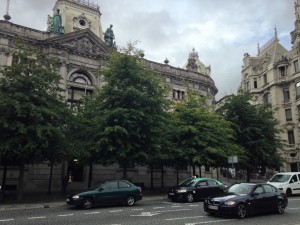 We took a guided walking tour through the streets of Porto’s old town, a designated UNESCO World Heritage site in which some of the city’s most attractive and important buildings were clustered. The main streets of Porto were bustling but not overcrowded. We started at the Avenida dos Aliados, the monumental heart of Porto, a sloping boulevard lined with grand buildings and a central promenade. Most of the buildings were hotels or main branches of the country’s major banks. At the top of the avenue stood the Town Hall with a tall bell tower (70 m high). Made of granite and marble, its design was influenced by municipal architecture of Flanders and France.
We took a guided walking tour through the streets of Porto’s old town, a designated UNESCO World Heritage site in which some of the city’s most attractive and important buildings were clustered. The main streets of Porto were bustling but not overcrowded. We started at the Avenida dos Aliados, the monumental heart of Porto, a sloping boulevard lined with grand buildings and a central promenade. Most of the buildings were hotels or main branches of the country’s major banks. At the top of the avenue stood the Town Hall with a tall bell tower (70 m high). Made of granite and marble, its design was influenced by municipal architecture of Flanders and France.
In front of the 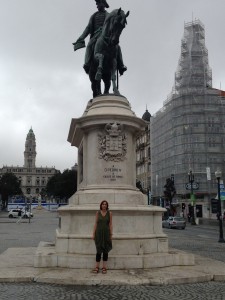 building is a modernist statue of Portuguese writer Almeida Garrett. He was a Portuguese poet, playwright, novelist and politician. He was considered to be the introducer of the Romanticism in Portugal. At the other end of the avenue is Praça da Liberdade, a square adorned with a statue of King Pedro IV on a horse.
building is a modernist statue of Portuguese writer Almeida Garrett. He was a Portuguese poet, playwright, novelist and politician. He was considered to be the introducer of the Romanticism in Portugal. At the other end of the avenue is Praça da Liberdade, a square adorned with a statue of King Pedro IV on a horse.
We walked through the streets while the guide told as about the city, about the people living there, political and other scandals, about writers, about the history behind some of the buildings. Some of the stories were so bizarre that I took it with a pinch of salt, but when I later Google it, it seems to be true!
At the top of Rua das Carmelitas, was the Livraria Lello, one of the oldest bookstores in Portugal and described as the third best bookstore in the world. The Neo-gothic façade, combined with the store’s rich heritage made it more than just a bookshop.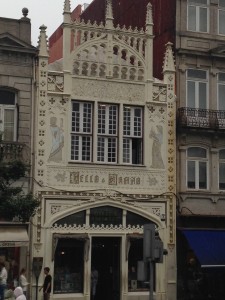
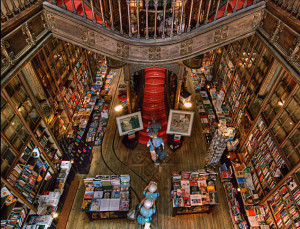
The store was originally established as the Livraria Internacional de Ernesto Chardron in 1869 and later sold to Jose Lello in 1906, who had another bookstore on Almada Street nearby, and moved to its current building. Like any building, Lello Bookshop began to feel the effects of decades of hard use and it was rescued by a huge renovation project in 1995 and returned to even more than its former glory.
At first, I just stood and gazed at the two storeys of book-lined walls, illuminated by light flooding down from the ornate stained-glass ceiling and the unique design of the stairway. I just stood and looked, amazed by what I saw. The collection covered all types of genres and while many were for sale, others were purely for exhibition, encased in glass-enclosed bookshelves for posterity, like the ancient wheelbarrow on tracks that was once used to carry heavy volumes between the main door and the shelves. The impressive interior was breathtakingly beautiful, with a spiral art nouveau staircase forming the main artery of the building, complementing the wooden panelled ceiling and beautiful carved bookcases. While I was taking this photograph “No photographs please!” was pronounced. Unfortunately, it was forbidden to take photographs inside the shop.
Upstairs, in a small seating area at the front of the gallery, coffee and camomile tea were available. It was originally larger and JK Rowling wrote in this café on the second floor. This opulent bookshop inspired the Harry Potter’s library in Hogwarts. In fact, JK Rowling lived in Porto, apparently while she wrote Harry Potter and the Sorcerer’s Stone. She was raising her daughter in a small apartment, teaching English, and writing in cafes around the city. The caped students seen throughout the university area also inspired her. We saw a few of these Hermione-looking students in the streets of Porto.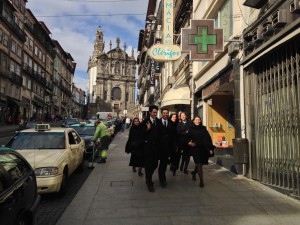 Unfortunately, the bookstore was no longer a refuge for people that wanted to write or even browse the books in peace. A constant stream of visitors strolled through the bookstore, which created a touristy ambiance that was exacerbated by the staff. Every time someone so much as touched a camera, they yelled “NO PHOTOS!” in a loud voice. That said, photos did no justice to the real thing. This place was one of the more stunning bookshops that I have seen. If I went back to Porto, I would certainly visit again.
Unfortunately, the bookstore was no longer a refuge for people that wanted to write or even browse the books in peace. A constant stream of visitors strolled through the bookstore, which created a touristy ambiance that was exacerbated by the staff. Every time someone so much as touched a camera, they yelled “NO PHOTOS!” in a loud voice. That said, photos did no justice to the real thing. This place was one of the more stunning bookshops that I have seen. If I went back to Porto, I would certainly visit again.
The Clérigos Church (Church of the Clergymen) is a Baroque church in the city of Porto, in Portugal. Its tall bell tower, the Torre dos Clérigos, can be seen from various points of the city and is one of its most characteristic symbols. It was a remarkable baroque landmark designed by the Italian architect Nicolau Nasoni, who also designed the adjoining church where he was buried in the crypt of the Clerigos Church. The tower (torres) was the tallest structure in Portugal when completed in 1763. The tallest structure now is the Vasco da Gama Tower in Lisbon. 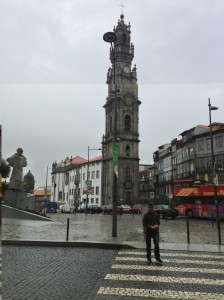
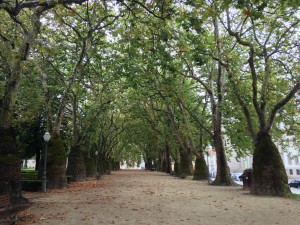 Opposite the tower are Cordoaria Gardens and an imposing Neoclassical and Pombaline building that was the city’s former prison. The ground floor houses a photography museum with both permanent and temporary exhibitions. Our guide told us about Camilo Ferreira Botelho Castelo-Branco, as with the story about JK Rowling, I at first thought it was a juicy story told only for sensation value, but when research found to be true.
Opposite the tower are Cordoaria Gardens and an imposing Neoclassical and Pombaline building that was the city’s former prison. The ground floor houses a photography museum with both permanent and temporary exhibitions. Our guide told us about Camilo Ferreira Botelho Castelo-Branco, as with the story about JK Rowling, I at first thought it was a juicy story told only for sensation value, but when research found to be true. 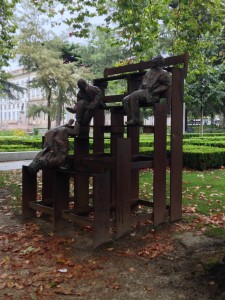
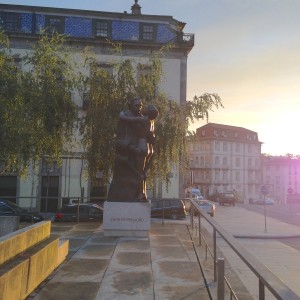
Camilo Castelo Branco was the first Portuguese writer able to support himself from his writing alone. He was born out of wedlock and orphaned in infancy. Camilo spent his early years in a village in Trás-os-Montes, where he was educated at home by three unmarried aunts. He intermittently studied medicine and theology in Porto and Coimbra and eventually chose to become a writer. In all, his publications number about five hundred and sixty, but he is best known for his romances. Even though Camilo churned out a lot of work to pay the bills, he never lost his individuality. He proceeded to the pontifical institute in Porto in order to study for priesthood. His restless nature drew him away from the priesthood and he devoted himself to literature for the rest of his life. He was arrested twice, the first time for having unearthed the remains of his first wife (whom he had married at the age of 16, and who had died at 24) and the second due to his adulterous affair with Ana Plácido, who was married at the time. During his imprisonment he wrote his most famous work “Amor de Perdição” (a Portuguese Romeo and Juliet). Camilo was made a viscount (Visconde de Correia Botelho) in 1885 in recognition of his contributions to literature, and when his health deteriorated and he could no longer write, Parliament gave him a pension for life. Going blind because of syphilis and suffering from chronic nervous disease, Castelo Branco committed suicide with a revolver in 1890, while sitting in his now-famous wooden rocking chair.
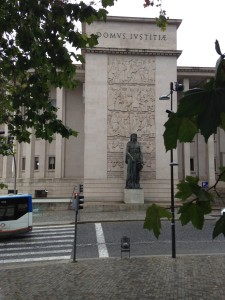 Adjacent to the Cordoaria Garden (also Joao Chagas Garden) was the historical Santo Antonio Hospital, classified as a national monument for being a remarkable example of 18th century neoclassical architecture. It was built between 1770 and 1824 by the British architect John Carr. It arose some criticisms saying it appeared more like a palace than a hospital.
Adjacent to the Cordoaria Garden (also Joao Chagas Garden) was the historical Santo Antonio Hospital, classified as a national monument for being a remarkable example of 18th century neoclassical architecture. It was built between 1770 and 1824 by the British architect John Carr. It arose some criticisms saying it appeared more like a palace than a hospital.
The beautiful gardens of the Palacio de Cristal, overlooking the Douro River were as popular with the Porto locals as they were with visitors to Porto. The gardens had exotic trees and plants, fountains, ponds, statues, animals such as strutting peacocks, walkways, mirrors, chapels, viewpoints and tree-lined avenues. The beautifully landscaped park was dominated by a huge domed pavilion built in 1956, which replaced the 19th century iron-and-glass Crystal Palace. The pavilion itself hosted important music concerts and sporting events and had a permanent multimedia library, auditorium, café and the Romantic Museum. With a seating capacity of 10,000, this was one of Portugal’s leading entertainment venues.
The Arrábida Bridge was an arch bridge over the Douro River that connected Porto to Vila Nova de Gaia, in Portugal. It was the most downstream bridge across the Douro River, just a few kilometres from the Atlantic Ocean. At the time of its completion in 1963, the bridge had the largest concrete span of any bridge in the world. The total length of the deck is of 615 m, having a width of 27 m. The arch is 52 m tall and the rises up to 70 m above water level. The Duoro River divided Porto and Gaia where you can cross the river for Port wine tasting at one of the many producers. Unfortunately we had not enough time for a wine tasting tour. Another reason to go back to Porto!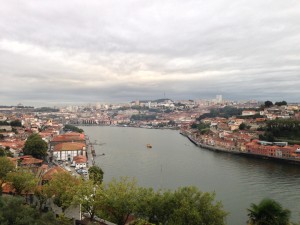
What looked like just one big church was actually two, connected by what was one of the world’s narrowest houses, just 1 metre wide. To the left was Carmelitas Church, part of a former 17th century convent with a simple classical façade, a bell tower and a richly gilded interior. To the right was Carmo Church, built later in the 18th century. On the outside was an extraordinary sidewall completely covered in blue and white tile panels. The house that separated the two churches was inhabited until about 20 years ago. It was built due to a law that stated that no two churches could share a wall, while also ensuring chastity between the monks of Carmo and the nuns of Carmelitas.
After the guided walk we are on our own to walk back to our hostel. The views of the city were even more spectacular because the rain stopped and the sun highlighted specific spots in the city.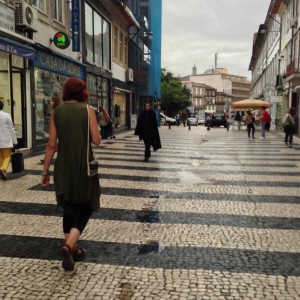

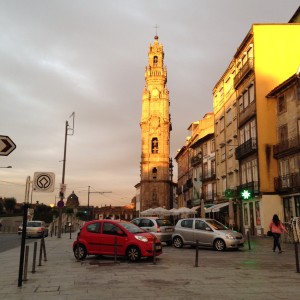

Thursday, 26 September 2014
The Porto cathedral (SÉ do Porto) was an austere fortress-like cathedral where Prince Henry the Navigator was baptised. The building was built in the 12th century, although it underwent many alterations over time. The Gothic rose window was the only part of the original façade that remained, especially after Baroque alterations in the 18th century. The Gothic cloisters were more outstanding than the church itself, covered with magnificent blue and white tiles from the 18th century. Although the cathedral was the city’s largest church, the most impressive church in Porto is São Francisco Church, which has a magnificent golden interior. We missed this one, another reason to go back to Porto.
While walking the streets of Porto we again came across the students out of a Harry Potter book. It seemed as if they were busy with some sort of ritual, or Praxe. Praxe is a set of practices that aim the reception and integration of new students in higher education institutions. The goal was always to unify and distinguish the academic community. Traditionally composed by a cloak and cassock, until 1937 only men wore the outfit, it was the women of the University of Porto that first adopt this tradition. Although mainly used in academic ceremonies, during Praxe or other special occasions for students, it is relatively common to see students with gown at Porto.
My time in Porto was wonderful and I enjoyed what it had to offer, amazing architecture and beautiful views along the river, a friendly social scene, and a glimpse into the heights of Portugal’s past. Time spent in Porto was too short. I liked the people, the ambience, the architecture and the Port Wine.
Note to self: must go back one day.
